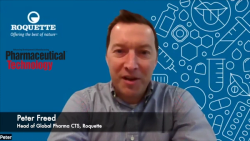
OR WAIT null SECS
- About Us
- Advertise
- Contact Us
- Editorial Info
- Editorial Advisory Board
- Do Not Sell My Personal Information
- Privacy Policy
- Terms and Conditions
© 2025 MJH Life Sciences™ , Pharmaceutical Technology - Pharma News and Development Insights. All rights reserved.
New Developments In Film Coatings
Pharmaceutical Technology Europe
The main drivers for innovation in film coatings in the last 5 years mainly relate to optimising the film coating process itself, as well as to the need for film coating materials with enhanced functionality.
The main drivers for innovation in film coatings in the last 5 years mainly relate to optimising the film coating process itself, as well as to the need for film coating materials with enhanced functionality. As such, new products have been developed to make coating processes more efficient by reducing coating times, defect rates and the time needed for product development and scale-up operations. Coating polymers with a low viscosity are particularly suited to meet these needs. A low viscosity allows a higher solids content; the higher the solids content, the less time required to achieve the target coating level. Beyond that, higher flexibility of the coating polymer reduces defect rates; for example, if the tablet core swells due to water absorption during storage, a flexible film will adapt easily without cracking, helping to reduce the defect rates.
Thorsten Schmeller is Head of Global Marketing New Products at BASF.
The majority of new product developments focus on ready-to-use coloured coating systems because of their convenience, simplicity and cost synergies in the supply chain. Coating systems combine an optimised coating formulation driven by the polymer properties with a consistent colour quality. This approach also leads to a reduction of weighing steps compared with single raw materials. Coating systems show great benefits over single raw materials and are therefore of interest for the industry.
The pharma industry has also actively been asking coating manufacturers for support regarding optimisation of the supply chain. The industry currently offers two different approaches for coating systems: pre-formulated, colour-specific coating systems, which require storage space and logistics for each colour. The second and unique approach offered by BASF is to use coating systems based on a base colour concept, where the colour is created on-site out of seven base colours. The advantages here are reduced efforts in incoming raw material control and logistics.
Industry challenges
One particular challenge in the industry is obtaining adequately uniform films. Coating conditions, in general, are determined by the type of technical equipment used for the coating process. The amount of coating materials applied is a direct result of the number of spray gun passages; the more often the tablet passes the spray gun, the more uniform the tablet will be covered with coating material. Further to that, the coating suspension must have the ability to nicely spread out on the tablet surface.
In terms of functionality, the industry is also looking for solutions regarding formulation issues, such as taste masking. The masking of unpleasant tastes, which a lot of APIs have, has gained importance with the trend towards modern dosage forms, such as ODTs, and the need to develop paediatric medicines. Conventional film coating material often cannot solve this issue of taste, but there are two approaches that coating manufacturers can use. Firstly a combination of standard excipients may lead to synergy effects and might solve the issue. In many cases, however, new and improved functional polymers are the only solution to overcome the challenge, a number of which are currently in development.



